I feel there is no better place than the house of 109 doors, (Eureka Mansion for its formal name) to delve into the fascinating colonial history of Mauritius. Mauritius was claimed by France in 1715 and was administered by the French East India Company. The French government took control in 1767. In 1810 the island was captured by the British during the Napoleonic Wars. In the last blog we looked at how the British built their defences and this creole house was built in 1830 between the Moka river and Mount Ory. The house is perfectly sheltered among the local trees, and sits beneath the Mount which provides the most stunning back drop to this picturesque, colonial house (as I think you would agree from the pictures).
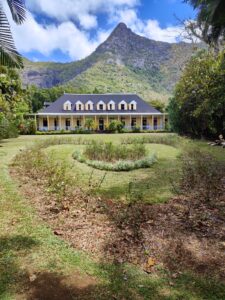
House of 109 doors was built by Mr. Carr, a British aristocrat, who wanted to be close to ‘Le Réduit’ (the Governor’s house – which is now, coincidently, home of the President of Mauritius). I’m led to believe that it was then sold to Mr & Mrs Robinson via an intermediary family before the Robinsons sold it in 1856 to Eugène Le Clézio. I must admit to being a little bit confused over these next stages of its history, so hopefully I have got this right. I believe that Eugène was the eldest son of François Alexis Le Clézio. When François visited the island and discovered the home, it was the home of his dreams and said Eureka! (reference Archimedes’ exclamation Eureka!). This family would remain owners of the house for the next 120 years. The family was to build its wealth on the island’s sugar industry. The house of 109 doors passed through the generations before finally being sold to 2 real estate agents in 1975. They only kept it for two months before Jacques Planteau de Maroussem and his in-laws bought it. Jacques’ mother-in-law was a grandchild of Sir Henry Le Clézio (son of Eugène) so the house was in family ownership once more.
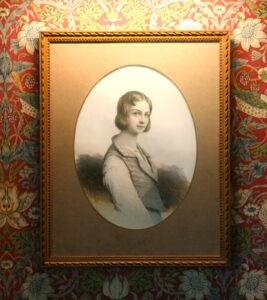
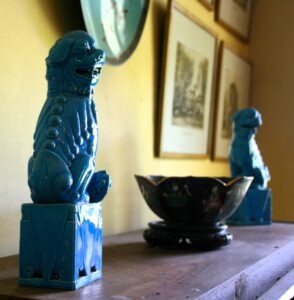
House of 109 doors was built completely out of wood. It is now a museum and provides a fascinating insight into 19th century Mauritius and the country’s plantation past. It certainly is a masterpiece of tropical construction. It is a real beauty to behold (look at that picture with the mountain behind the house). It was built using local ebony and mahogany wood and with some of the structural beams are made of tambalacoque wood (the seeds of this tree were eaten by the dodo). Two verandas were constructed. One points to the north (for the winter) and one to the south (for the summer). It is through the northern veranda that entrance to the house is made. As we walked into it we immediately felt like we had stepped back in time. Fine furniture and curious antiques were in each of the ground floor rooms. Particular sights of interest were an antique gramophone, and old camera and a piano (remembering my youth when lessons were regular, and I wish I hadn’t stopped playing) where we duly sat for a customary tourist photo. There was no kitchen in the house as it was made out of wood. This was a good design feature as this separate building was only a short way from the main house – fire prevention I guess.
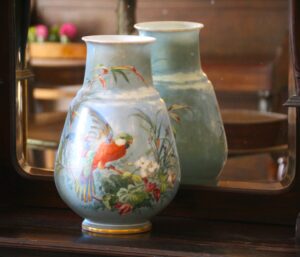
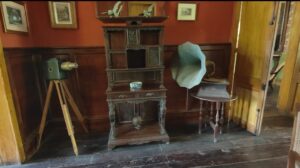
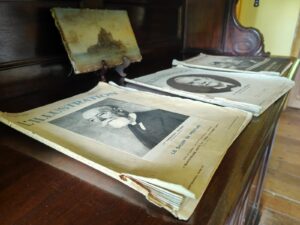
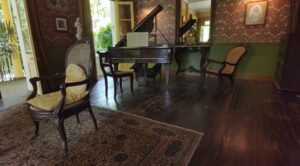
We finally dragged ourselves out of the house of 109 doors to explore the grounds and gardens. Sprawling out in front of the southern porch was a lush green lawn which narrowed off at the far end. To the left was a secluded pathway that took you to the end of the garden. At the end of the path, there was a little area where we turned around to look back at that incredible view. Beautiful. Stunning location. The sun peeking through the clouds lit up this wonderful house, some of the 109 doors and windows gleaming like laser beacons at us. The small, planted area at the bottom of the garden looked like it had been constructed in the shape of a heart.
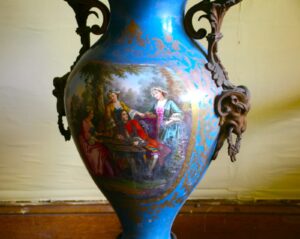
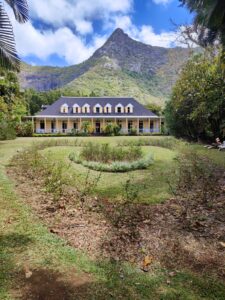
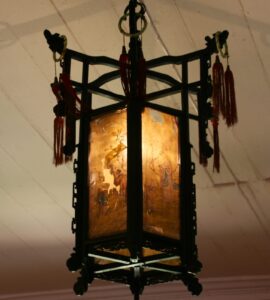
We left this dreamy Mauritian view and continued to follow the path. The path was to lead to the famous waterfalls that formed part of the estate. The path did change to a steep and uneven route which passed through Mauritian flora and fauna. Not being an expert on this, it was of little interest apart from providing shade from the beating sun. Along the way there was a sign that I’ve read before but is always a poignant reminder of the need to look nature. “Kill nothing but time. Leave only footprints. Take only pictures”. When we reached the bottom of our climb, we found 3 fine waterfalls but the fourth one didn’t look that impressive. We could have spent longer enjoying the therapeutic sounds of flowing water and bird song, but we were keen to see so much more so we walked quickly between the waterfalls before making the climb back the way we came. The heat certainly made harder work of the route, but we got back to the house invigorated but exhausted, hot and sweaty and in desperate need of a drink. We duly supported the local café/kitchen by buying a couple of drinks. We sat out on the northern porch and took a moment to ourselves before heading back to our patient driver who waited in the car for us. Join us as we move onto our next stop of this island.
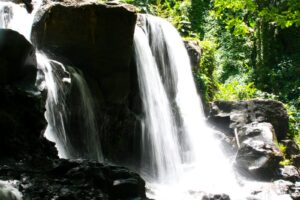
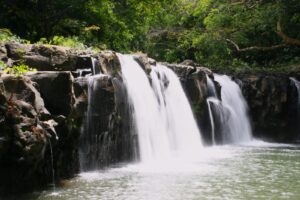
Maison Eureka, Mount Ory Road, Eureka, Mount Ory, Moka VCA, East, Moka, 80825, Mauritius
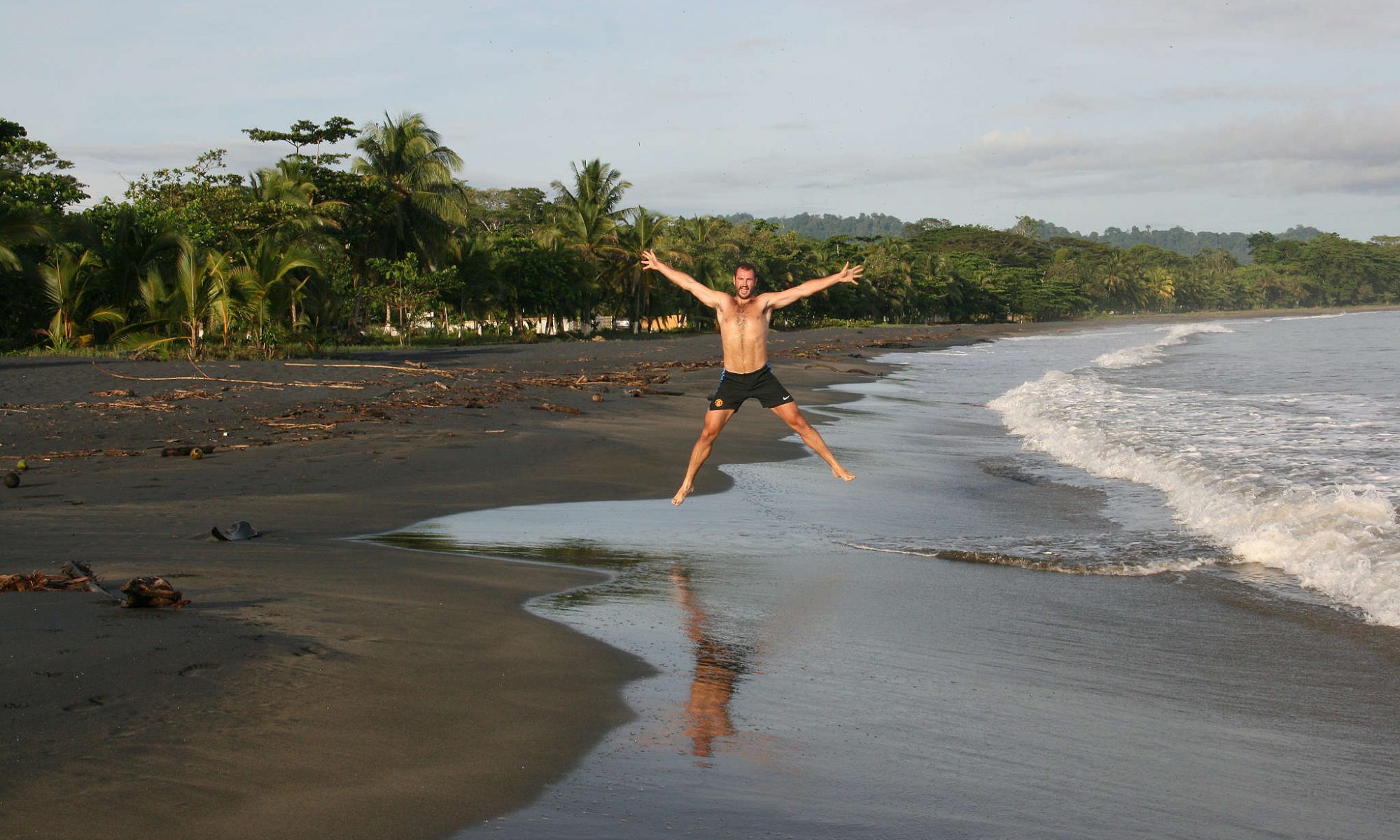
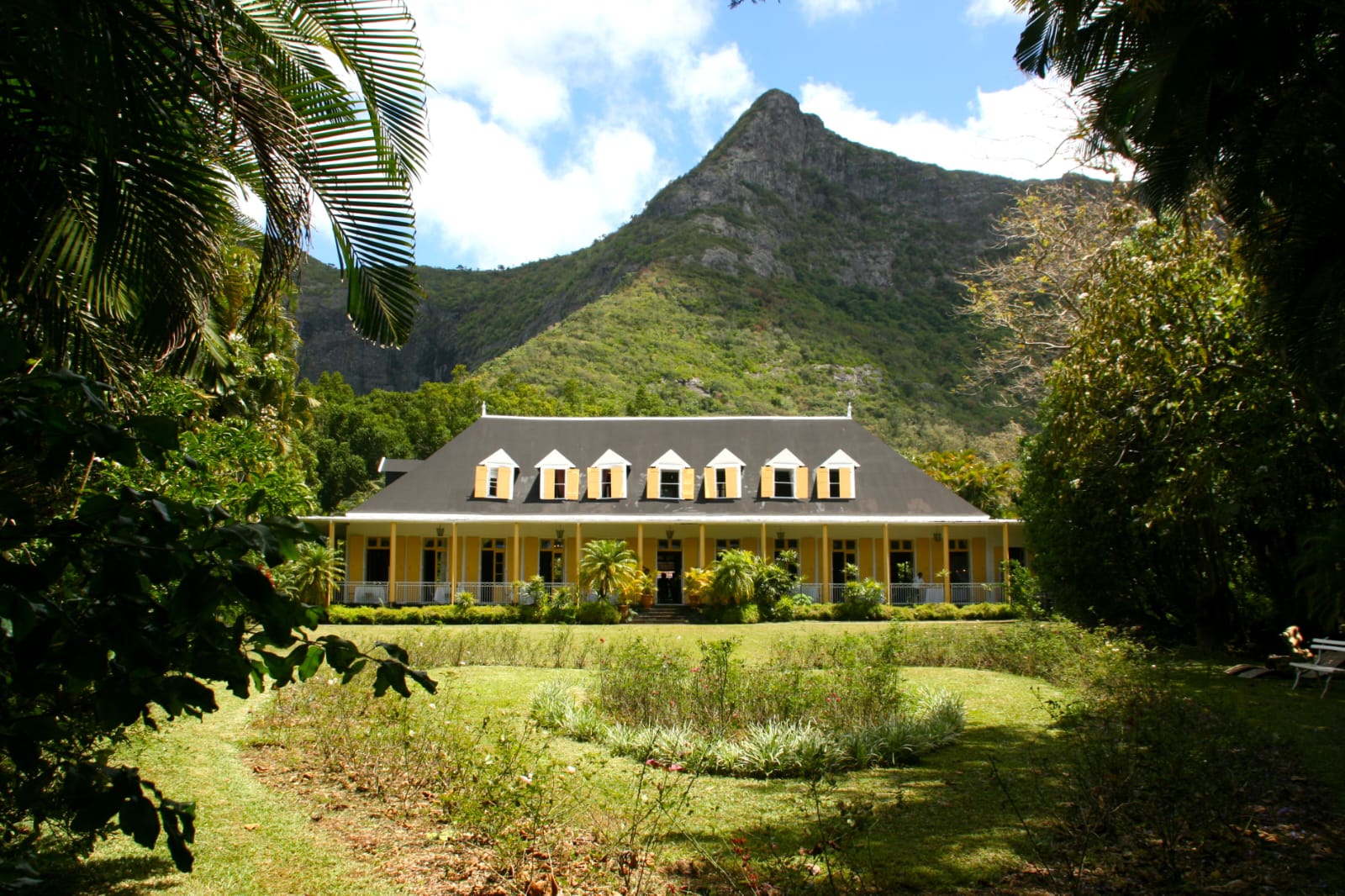
Enjoyable read
Mark goes the extra mile, and leaves no stone unturned. To give us a head start where ever we go inthe world.
Hi Mark We were very interested to read blog,your descriptive writing painted the picture of your experience very professionally. The details included in your text took us on an exciting journey through the house and adjoining grounds with the waterfalls all situated under this spectacular hill or mountain,thank you very much for sharing this experience. Wendy and Mike .
Well done Mark, extremely interesting, considering Sue and I were there in Mauritius at the same time, it’s great to read about places we could not visit because of my lack of mobility! Thanks to the two of you!
Hi Peter and Sue, its lovely to hear from you and brings us great joy that you’re enjoying the blogs. Hopefully catch up soon